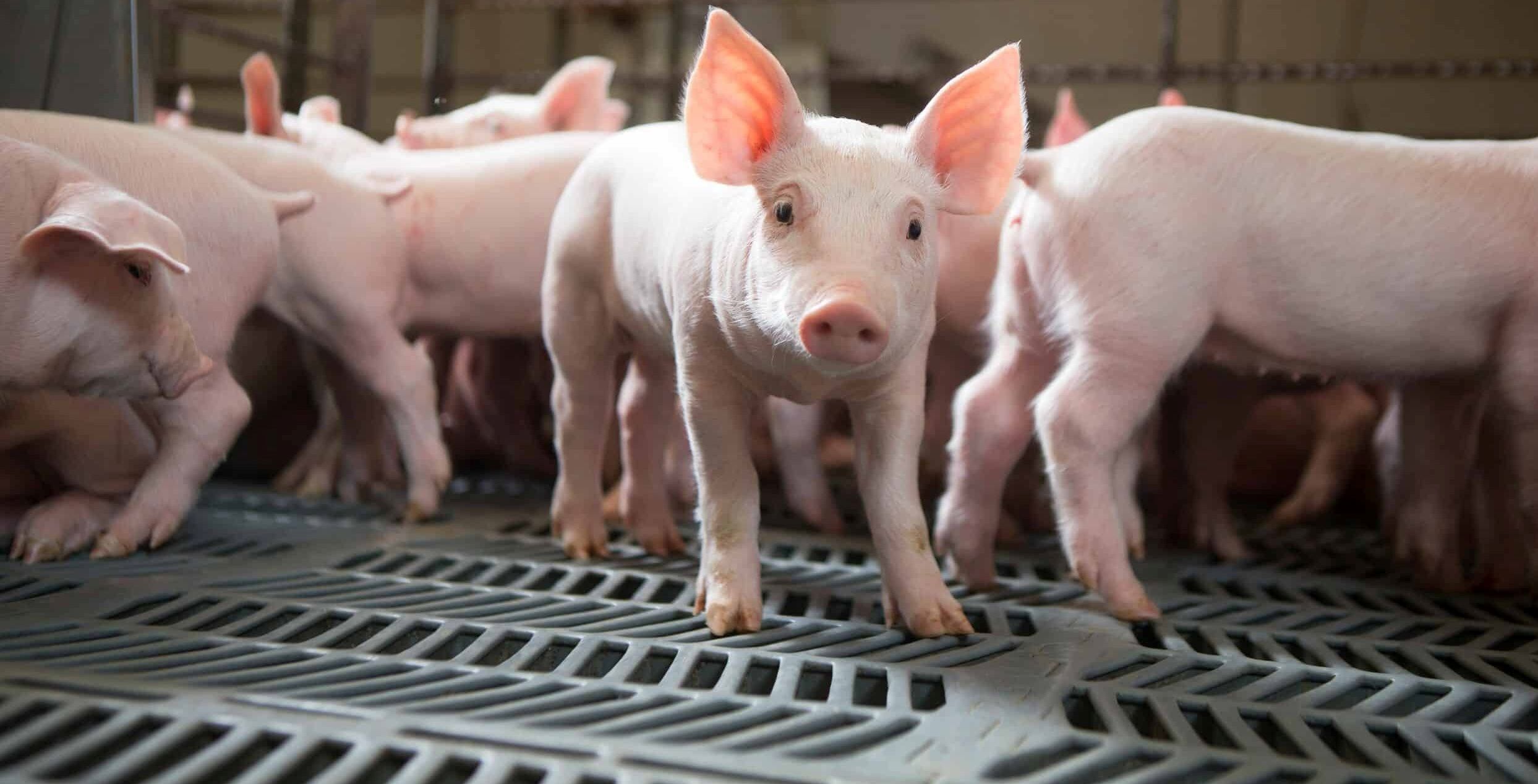
Swine production is a vital component of the global agriculture industry. Whether it’s for pork consumption or by-products such as lard and gelatin, pigs play a significant role in meeting the demands of consumers worldwide. If you’re interested in learning more about the fascinating world of swine production, you’ve come to the right place! In this article, we’ll delve into 19 intriguing facts that shed light on various aspects of swine farming, from pig breeds and reproduction to nutrition and management practices. So, whether you’re a farmer looking to expand your knowledge or simply curious about the ins and outs of pig farming, let’s dig in and discover the ins and outs of this crucial sector in the agricultural landscape.
Key Takeaways:
- Swine production is important for providing meat and contributing to the economy, while also requiring proper nutrition, biosecurity, and management for the well-being of pigs and sustainability.
- Pigs are smart, social animals with a strong sense of smell, diverse breeds, and unique digestive systems. Swine production faces challenges in disease control but contributes to global food security.
Swine production is an essential sector in agriculture.
Swine production plays a crucial role in the agricultural industry, providing a stable source of meat products for human consumption worldwide. From bacon to ham, pork is a staple in many cuisines and diets.
Pigs are highly intelligent animals.
Pigs are known for their intelligence, ranking as one of the smartest domesticated animals. They possess excellent problem-solving skills, can recognize their own names, and even learn simple commands. Their cognitive abilities make them adaptable to various training methods.
Swine production spans various systems.
Swine production can be classified into three main systems: intensive, extensive, and semi-intensive. Each system differs in terms of housing, feeding methods, and management practices.
Pigs have a remarkable sense of smell.
Pigs have a highly developed sense of smell, which they use to forage and locate food. Their keen sense of smell makes them valuable in tasks such as truffle hunting or search and rescue operations.
Swine production contributes to the economy.
The swine production industry generates significant economic benefits. It creates job opportunities, contributes to the agricultural sector’s growth, and contributes to a country’s overall economic stability.
Proper nutrition is crucial for swine growth.
A well-balanced diet is essential for the optimal growth and development of pigs. Providing them with a nutritionally balanced feed helps ensure their health and enhances meat quality.
Swine production practices require proper biosecurity measures.
To prevent the spread of diseases, swine production facilities implement strict biosecurity measures. These practices include limiting outside access, disinfection protocols, and rigorous monitoring of pig health.
Swine production plays a role in sustainable agriculture.
Integrating swine production with sustainable agricultural practices can help reduce environmental impact and promote resource efficiency. Proper waste management and utilizing pig manure as organic fertilizer are just a few examples.
Pigs have a diverse range of breeds.
There is a wide variety of pig breeds, each with its own characteristics and purposes. Some breeds are known for their meat production, while others excel in maternal abilities or are favored for their adaptability to specific climates.
Swine production requires proper herd management.
Effective herd management is crucial in swine production to ensure the health and productivity of the herd. This includes monitoring growth rates, implementing disease prevention measures, and implementing proper housing and ventilation systems.
Pigs are social animals.
Pigs are highly social animals that thrive in group settings. They form strong social bonds with their herdmates and display complex social behaviors, such as grooming each other and communicating through various vocalizations.
Swine production involves reproductive management.
Reproductive management is a vital aspect of swine production, as it directly affects herd productivity. Techniques such as artificial insemination and proper breeding programs are employed to maximize reproductive efficiency.
Piglets are born with a strong immune system.
Piglets are born with a well-developed immune system, allowing them to withstand diseases and infections. This natural immunity is further enhanced through colostrum intake, which provides essential antibodies.
Swine production practices continue to evolve.
The swine production industry embraces technological advancements and scientific research to improve efficiency, animal welfare, and sustainability. Innovation in areas such as genetics, nutrition, and housing systems constantly drives progress within the industry.
Pigs have a unique digestive system.
Pigs are omnivores with a peculiar digestive system. Their digestive tract is designed to efficiently process a wide range of feed ingredients, enabling them to convert various agricultural byproducts and waste into valuable nutrients.
Swine production faces challenges in disease control.
Controlling and preventing diseases is a significant challenge in swine production. Outbreaks of diseases like African Swine Fever (ASF) can have severe economic consequences and require strict biosecurity measures and surveillance.
Swine production contributes to global food security.
With the increasing global demand for animal protein, swine production plays a significant role in ensuring food security. By providing a reliable source of meat products, it helps meet the nutritional needs of a growing population.
Pigs are efficient converters of feed.
Pigs have a remarkable feed conversion efficiency, meaning they can convert feed into body weight gain more efficiently than many other livestock animals. This efficiency makes them a valuable livestock species for meat production.
Swine production is subject to quality assurance programs.
The swine production industry follows quality assurance programs to ensure the safety and quality of pork products. These programs encompass various aspects, such as animal welfare, food safety, and traceability.
Conclusion
In conclusion, these 19 swine production facts provide a glimpse into the fascinating world of pig farming. From the importance of proper nutrition and hygiene to the numerous benefits that pigs bring to our lives, it is clear that swine production plays a crucial role in our society. Whether for meat production or as companion animals, pigs have become an integral part of our agricultural practices.By understanding these facts, farmers and consumers alike can make informed decisions about pig farming practices and contribute to the sustainable growth of the industry. Swine production is not without its challenges, but with advancements in technology and a commitment to animal welfare, we can ensure the well-being of these intelligent animals while meeting the demands of a growing population.By implementing best practices and staying up to date with the latest research, we can continue to improve swine production methods and support the responsible and ethical farming of pigs. It is through these efforts that we can strike a balance between meeting the demand for pork products and promoting the well-being of the animals involved in the process.
FAQs
Q: What is swine production?
A: Swine production refers to the breeding, raising, and management of pigs for various purposes, including meat production, breeding stock, and research.
Q: Why is swine production important?
A: Swine production is important for meeting the growing global demand for pork and other pig products. It also provides employment opportunities, contributes to the economy, and plays a role in sustainable agriculture.
Q: What are some common swine production practices?
A: Common swine production practices include proper nutrition, housing, health monitoring, breeding programs, waste management, and biosecurity measures to ensure the well-being and productivity of the pigs.
Q: How long does it take for pigs to reach market weight?
A: It typically takes about 5 to 6 months for pigs to reach market weight, which is typically around 250 to 300 pounds.
Q: What are some factors that affect swine production efficiency?
A: Factors such as genetics, nutrition, environment, health management, and proper handling and care can all impact swine production efficiency.
Q: Are there any welfare concerns in swine production?
A: Yes, welfare concerns in swine production include proper housing, access to clean water and adequate space, avoiding overcrowding, disease prevention, and humane handling practices.
Q: How can swine production be environmentally sustainable?
A: Swine production can be environmentally sustainable by implementing practices that minimize waste, reduce water and energy consumption, and promote proper manure management and nutrient recycling.
Q: Are there regulations and standards for swine production?
A: Yes, there are regulations and standards enforced by governmental agencies and industry organizations to ensure the safety, quality, and welfare of pigs involved in swine production.
Was this page helpful?
Our commitment to delivering trustworthy and engaging content is at the heart of what we do. Each fact on our site is contributed by real users like you, bringing a wealth of diverse insights and information. To ensure the highest standards of accuracy and reliability, our dedicated editors meticulously review each submission. This process guarantees that the facts we share are not only fascinating but also credible. Trust in our commitment to quality and authenticity as you explore and learn with us.


